FC Utrecht have been a revelation this season in the Dutch Eredivisie.
After seven rounds, the club sits in second place in the standings, with six wins and a draw and are so far off to one of the best starts in the club’s 54-year history.
After finishing in seventh place in each of the last three campaigns, they narrowly missed out on continental football on each occasion via the European play-off system used in the Netherlands between the top-ranked sides outside of the top three.
But overall, they have established themselves as quite a consistent outfit for nearly a decade now in the nation, with nine consecutive top-seven finishes, which means they are always there each year when it comes to discussions of Eredivisie’s potential representatives in UEFA competitions.
This season, they’re looking to make their return to the continental scene for the first time since 2019, and with the way things have started, they may end up aiming for even more at the tail end of the term.
This tactical analysis will examine closely the keys to the club’s early-season success under experienced head coach Ron Jans and how everything has come about for the club.
FC Utrecht Build-Up Phase
First, let’s look at how Utrecht build out from the back this season.
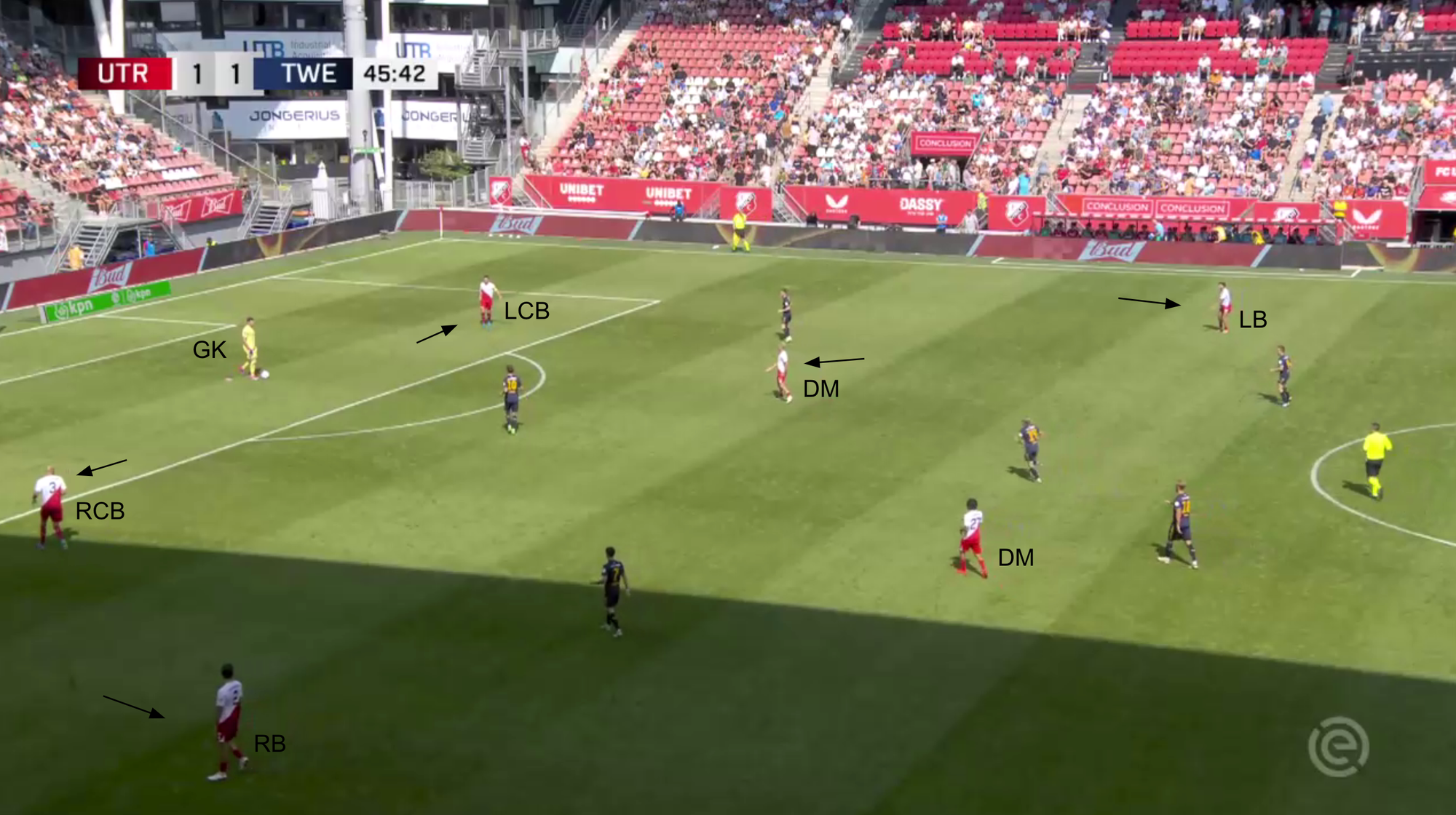
The example above is from the home game against Twente.
As we can see in the picture, both full-backs, Siebe Horemans at right-back and Souffian El Karouani at left-back, are keeping a more natural position early in the build-up phase, with the ball still at the goalkeeper’s feet.
We can also see the near-side defensive midfielder, Can Bozdoğan, coming closer to his keeper to offer a central option to circulate the ball to and create a triangle with both centre-backs, Mike van der Hoorn and Nick Viergever, moving wider to open the room down the middle and better space the team during this build-up phase.
It’s pretty routine at this point, but the players’ positioning changes as the ball moves into more advanced areas.
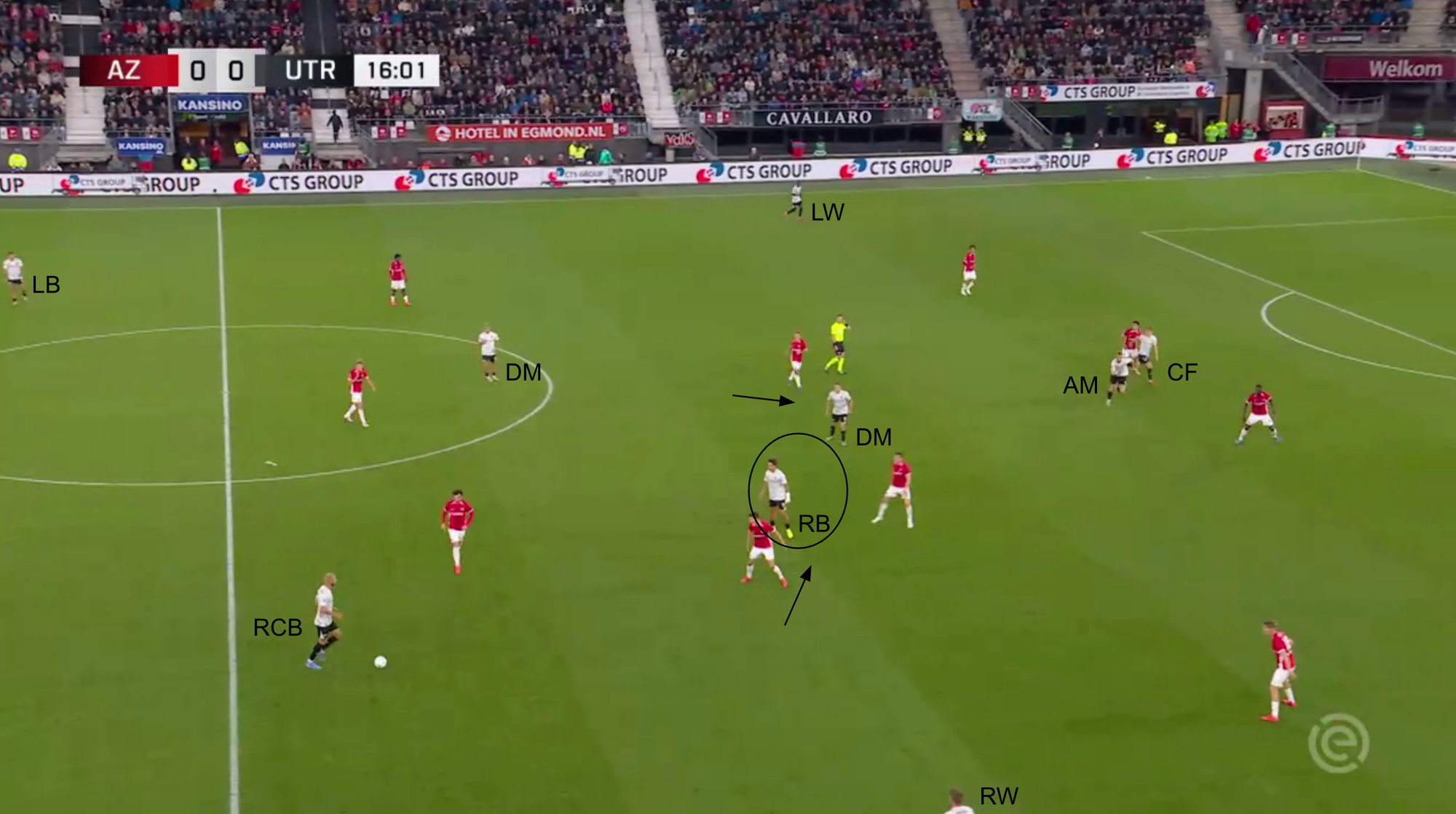
One of the notable changes above from the game against AZ Alkmaar is that we can see Horemans taking up a more central position on the field as Utrecht move into the opposition half through van der Hoorn, who is pictured carrying the ball out from the back.
We can also see El Karouani positioned much deeper to offer support to the build-up in case the opportunity to switch play to the left arose, as well as offering defensive balance up against AZ’s front three waiting to pounce on any mistakes.
Another evident thing is how both of the players in the double pivot of their usual 4-2-3-1 scheme, in this case, Bozdoğan and Oscar Fraulo, are both positioned much higher up the field, particularly Fraulo, who’s ready to turn to goal and join the attack in case the ball is played forward here.
This signifies that under Ron Jans coaching style, he likes his team to have plenty of offensive presence when they’re on the ball, with players pushing forward but without foregoing the team’s balance or structure.
Hence, the full-backs’ taking up a more inverted role works for them.
This allows them to take a more active role in possession and recycling or switching the ball when needed while opening up spaces out wide for the wingers to attack the opposition.
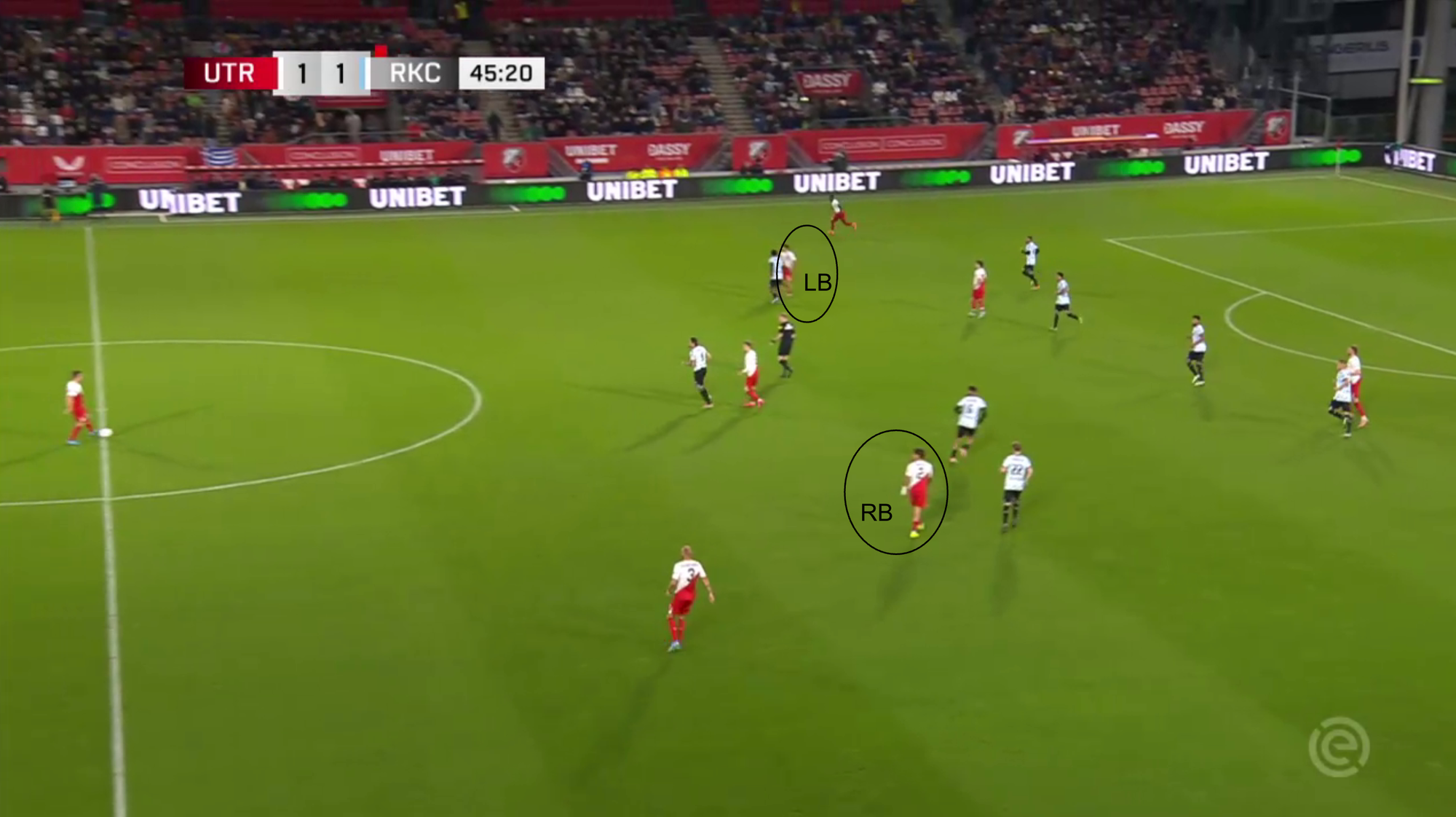
Here’s an example from the last home game against Waalwijk.
We can see both Horemans and El Karouani inverted high up the pitch and acting as connectors between the deeper-lying midfielders and the front attackers.
This role suits both players well; they are both very capable on the ball and have the energy to go up and down the field.
It also creates room for the wingers in front of them to receive diagonally in situations up against defenders in isolation.
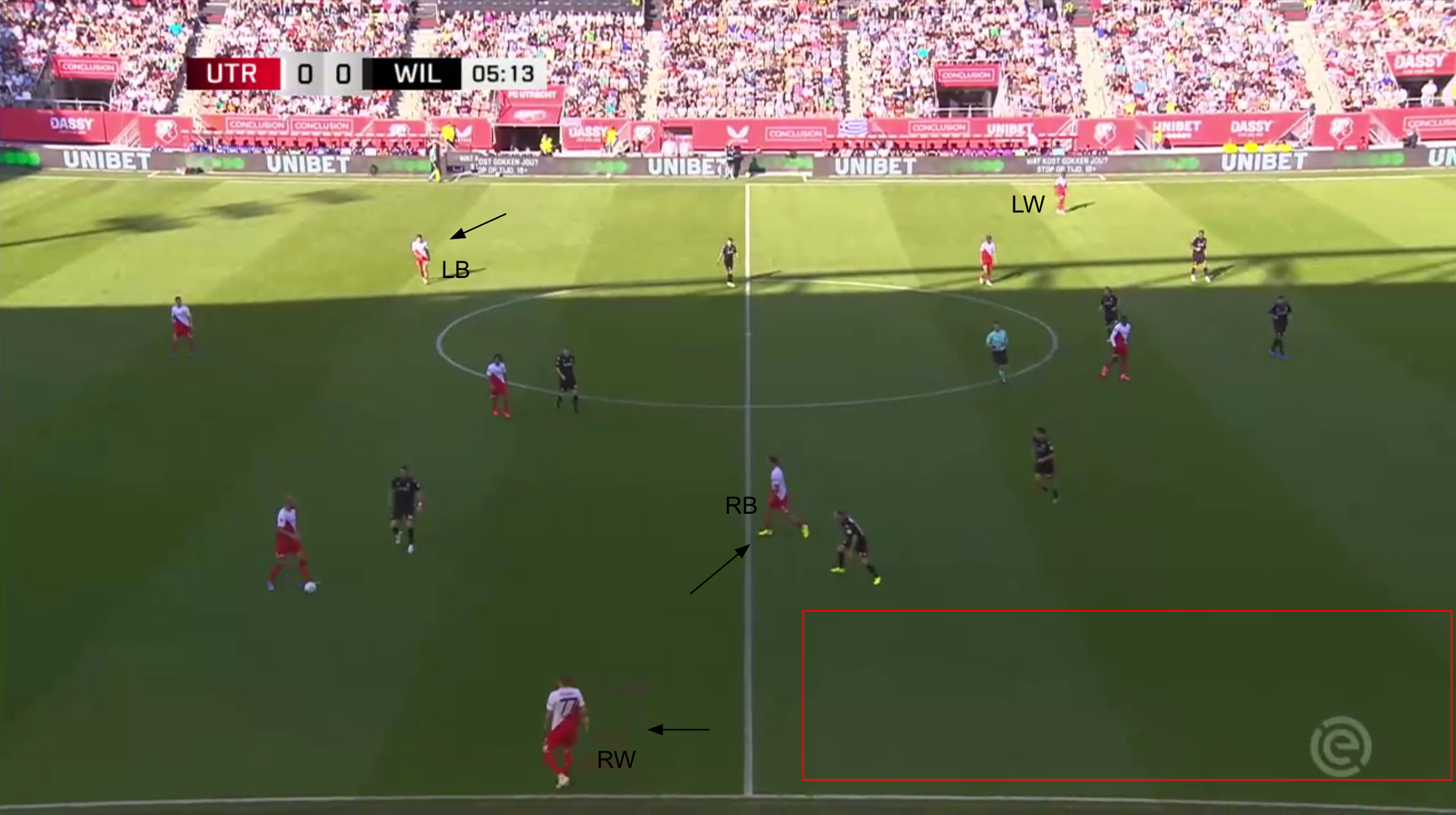
This example highlights what playing the full-backs more inverted achieves for Utrecht offensively as they work their way up the field.
As we can see, Horemans is tucked in more centrally here, attracting the attention of a marker dragged out of position attempting to pick up his run and not allow him to receive the ball with time and space to turn towards goal.
This opens a massive space on the flank, inside the red rectangle, for right winger Ole Romeny to attack into unopposed.
The same scenario could also be recreated on the other side with El Karouani also tucking in more centrally and Yoann Cathline free on the left flank in case of a switch, where he could be put in an isolated 1v1 situation against the right full-back.
FC Utrecht Attacking Phase
As the above has already shown, it’s no secret that Utrecht love to attack through their wide players.
And that is highlighted further by the Utrecht ball progression data viz below.
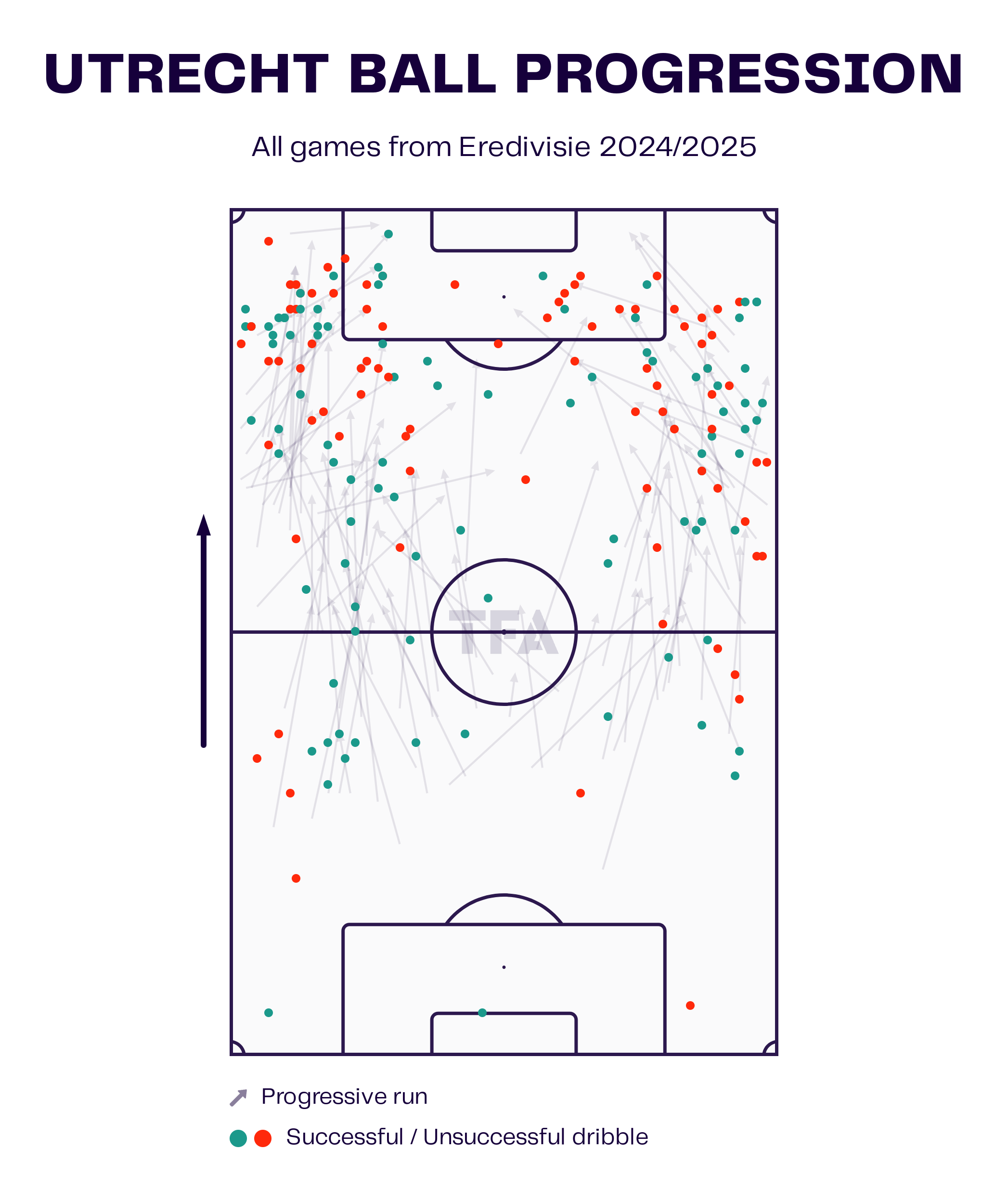
With most dribble attempts and progressive runs coming through those areas, Ron Jans style of play is to have his team very wide-focused offensively.
This vertical approach to attacking has worked well for them all season, with the vast majority of their goals coming from the flanks.
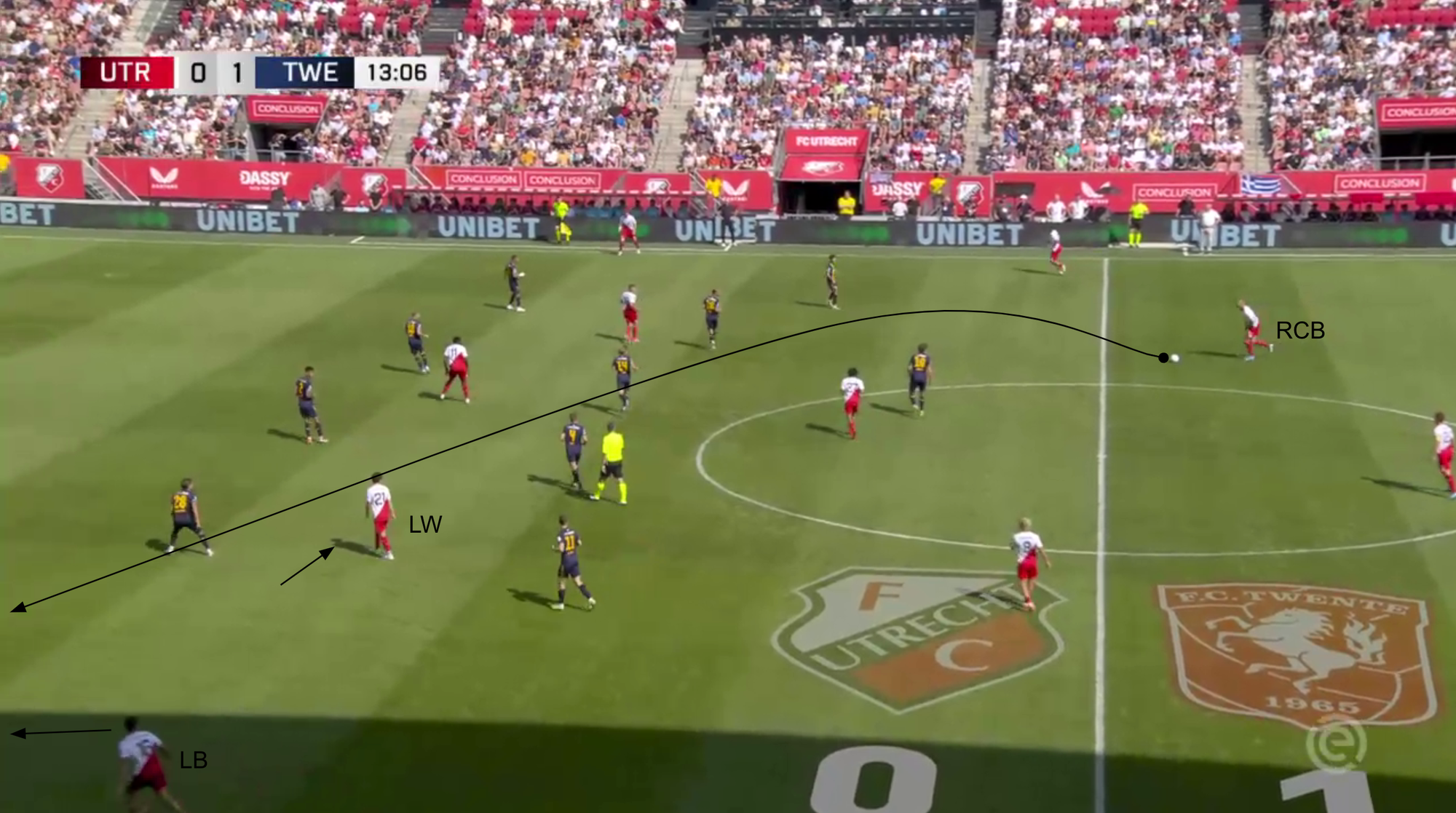
Here’s an excellent example of their verticality on the ball at work.
We can see El Karouani leaving his defensive post early because he spots a big gap to run into on the left flank offensively, which is crying out to be picked out by a good switch pass, which van der Hoorn supplies.
Jens Toornstra and Paxten Aaronson tucking into the half-spaces to form a more narrow frontline alongside striker Noah Ohio in this situation lures Twente into a more narrow defensive shape as well, in turn creating spaces such as the one El Karouani runs into here for them to attack vertically and directly.
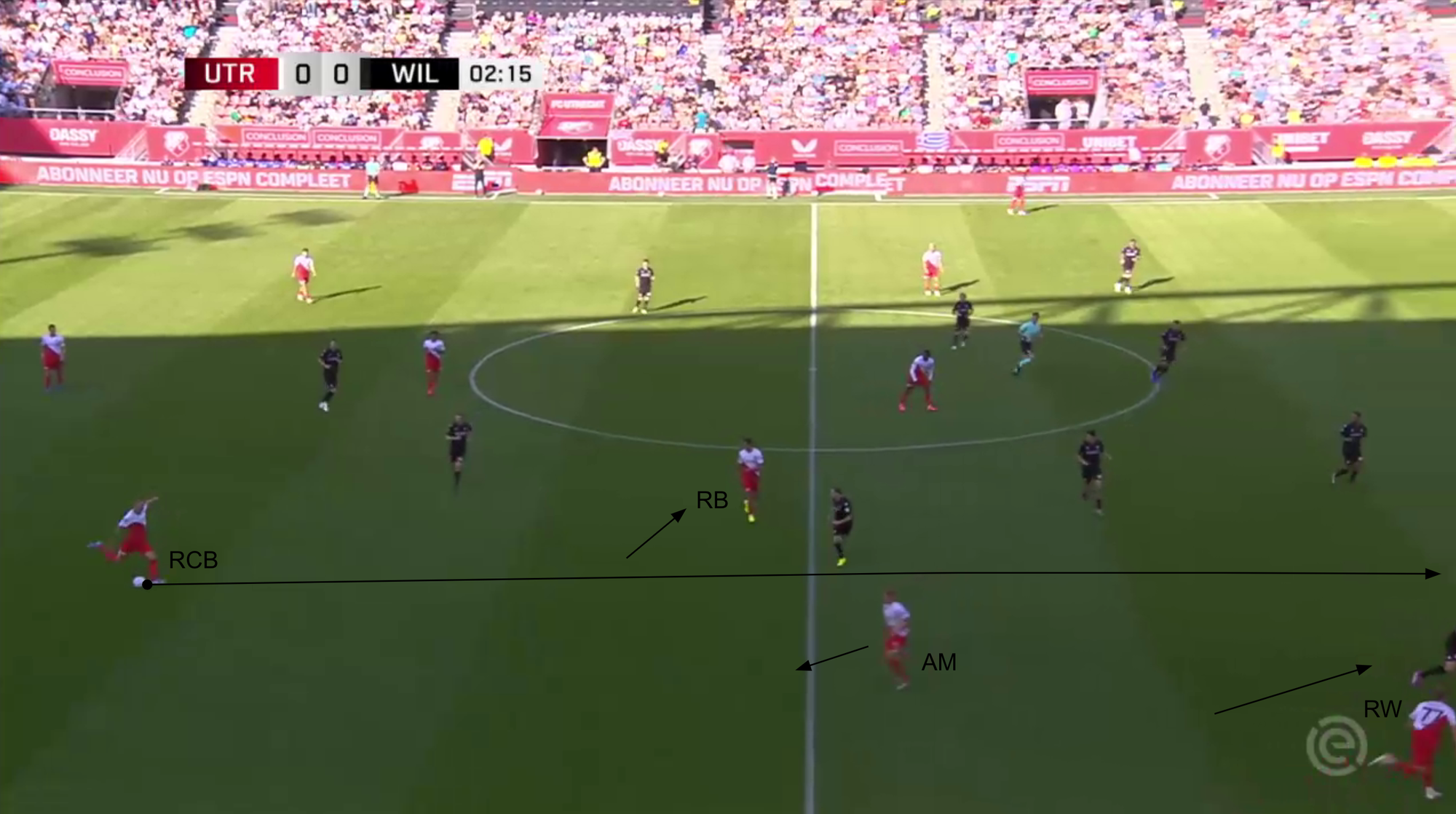
Above is another example of their wide players using the spaces on the field well and allowing a diagonal ball to pass into them from the Willem II home game.
Again, van der Hoorn is leading the charge with the responsibility to play out from the back, and once again, we can see Horemans’ inverted positioning and Toornstra’s clever movement at play here.
The Willem player between them is unsure which one to cover in case a short pass is played into either of them.
This opens up Romeny to attack the space behind an isolated Willem left full-back or, at worst, create a 1v1 situation against them by receiving the ball from Van der Hoorn.
Changes Since Opening Day
Under Ron Jans manager style, Utrecht has stuck to the same plot all season, regardless of the personnel available.
However, there have been minor alterations here and there, particularly up top and in the double-pivot positions.
First, let’s look at the centre-forward position.
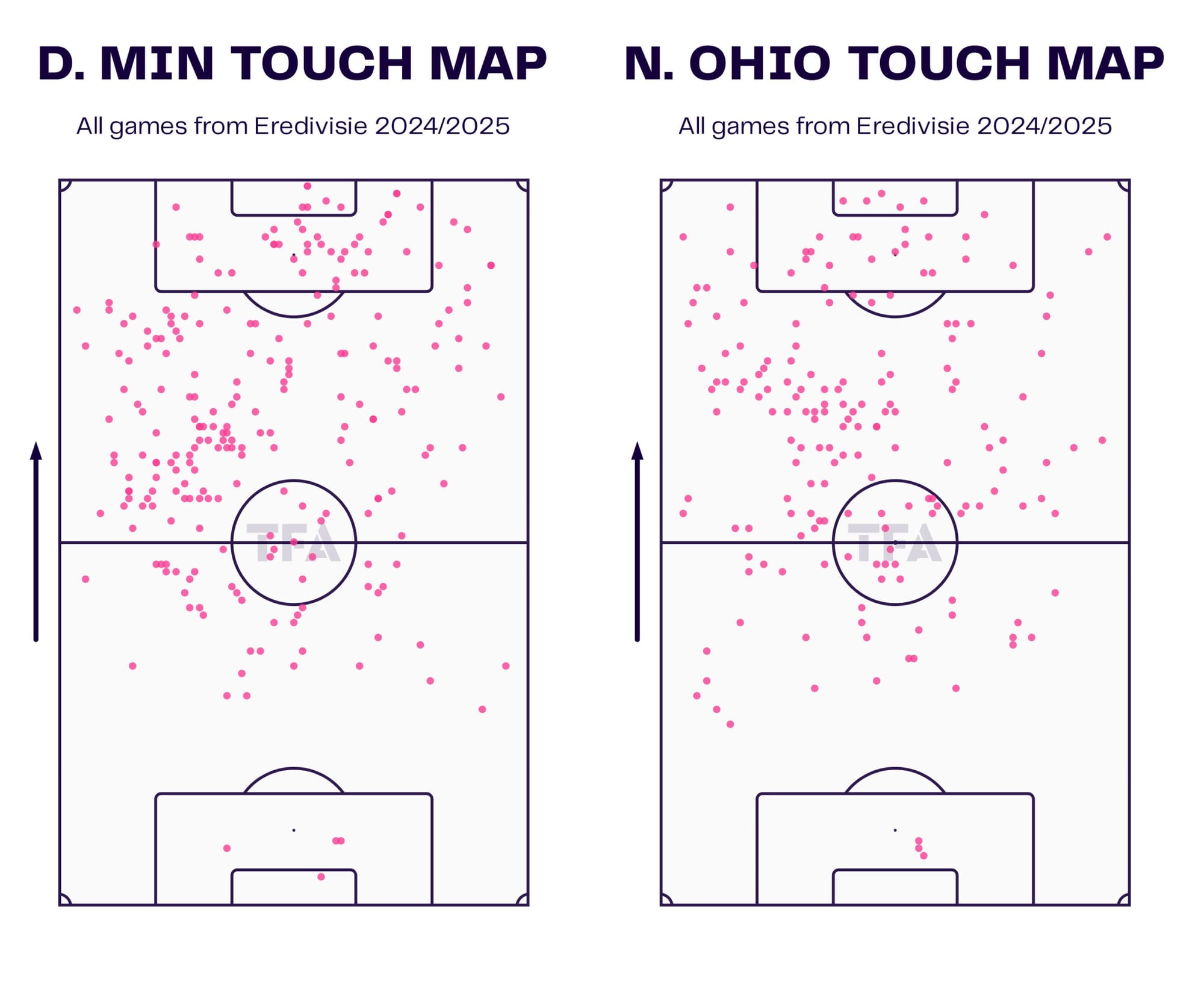
Utrecht’s two main options for the main #9 role are David Min and Noah Ohio, both summer acquisitions from Waalwijk and Standard Liege, respectively.
While Min has been given the nod for the most part so far, with five starts to Ohio’s two, the data viz above shows that very little changes as far as what a Utrecht striker is asked to do for the team.
Both players’ touch maps clearly show that neither is a static nine waiting to receive the ball near or inside the penalty area.
Both are comfortable getting involved in the game, even coming into their own half to get touches on the ball and aid the team in possession.
Both stand over six feet tall (183 cm).
They are adept at winning aerial duels, holding up the ball well, and bringing their teammates into play higher up the field.
So, it seems more a matter of preference depending on form and circumstances for Jans tactics.
Very little separates the two strikers, as both are capable of offering what he requires from whoever is in that position in this team.
But in midfield, there is a bit more difference depending on who plays those vital positions.
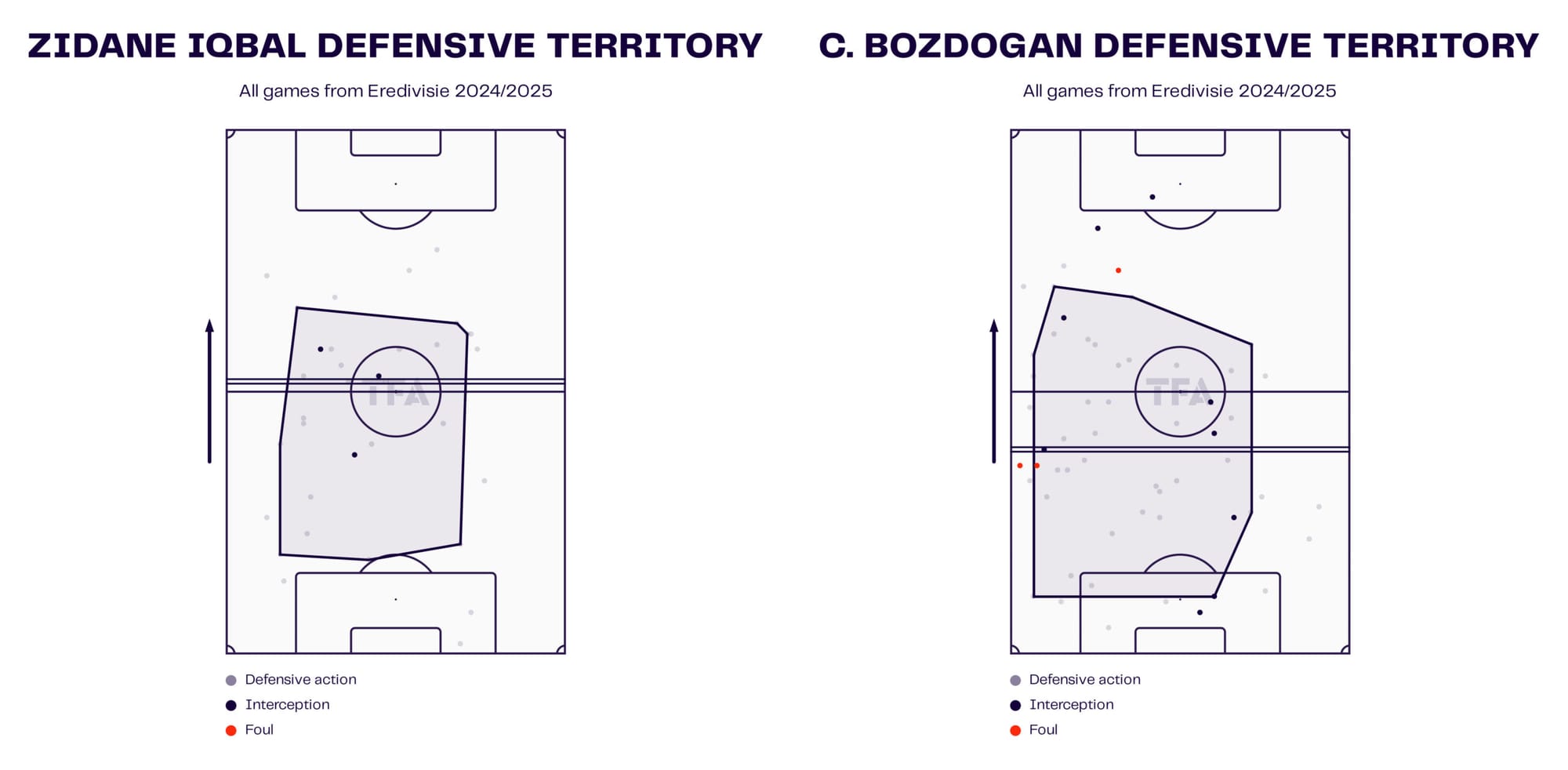
Former Manchester United player Zidane Iqbal began the season as the main defensive midfield partner next to Alonzo Engwanda but wasn’t able to keep his spot as he lost his place in the team after the first three rounds.
In came Can Bozdoğan, who has been relatively standard ever since, and perhaps the data visualization above explains why.
As we can see, Bozdoğan clearly contributes a lot more on the defensive side of proceedings than Iqbal did, with far more defensive actions and more ground covered on average than the Iraqi international.
Although, Bozdoğan himself has begun to lose his spot as well since the first half of the AZ encounter, with Paxten Aaronson taking a more central midfield role after starting the campaign on the left wing.
And it seems to be paying dividends for Jans and the American alike, with Aaronson scoring his first goals of the season in back-to-back games in this new role.


A while back, Total Football Analysis published a Paxten Aaronson scout report on the young American prospect.
One of the critical attributes highlighted in his game was his ability to time his runs well and make intelligent movements into space in crucial attacking areas where he could impact the game.
A little over two years later, it’s clear that he very much still has this asset in his locker, as highlighted by the goals against AZ and Waalwijk pictured above.
While it’s still a very small sample size for Aaronson in this new central role, it’s been a promising development for him in recent weeks, and it will be interesting to see how he evolves in that position for Utrecht.
American fans will want to keep an eye on this one.
Moving Aaronson more centrally has meant Jans tactically has found another way to keep him involved, even after giving the left wing berth to Yoann Cathline, a more direct 1v1 winger more suited to play in this system that Utrecht has, which thrives on its wing play tactics.
FC Utrecht Defensive Phase
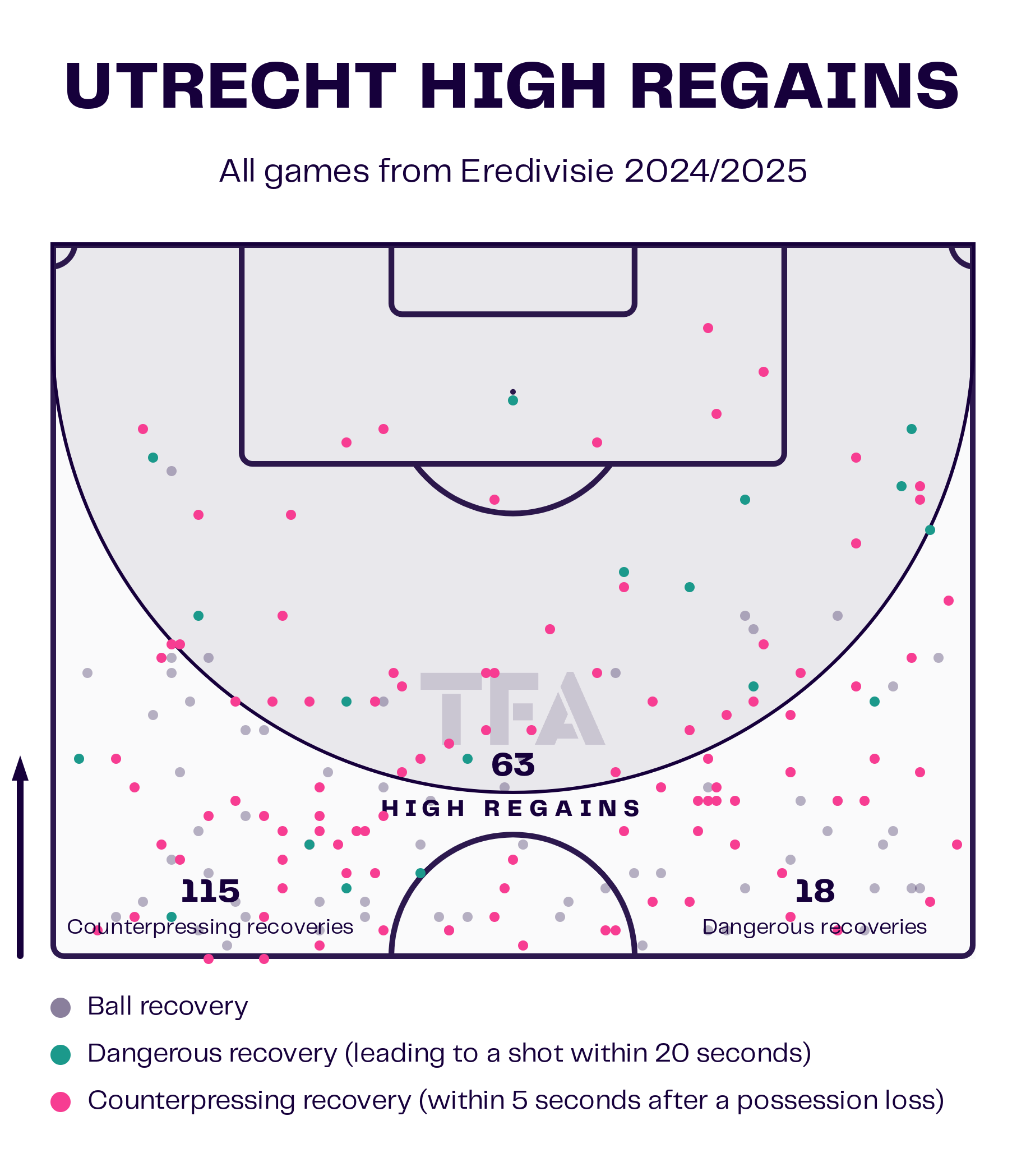
Defensively, Utrecht have also kept things pretty tight, with just eight goals allowed so far in seven games.
As the data viz above again shows, part of that defensive success comes from their ability and eagerness to win the ball back higher up the field from the opposition.
With an average of nine high regains and nearly 20 counter-pressing recoveries per game, this is clear to be critical to their game on both sides of the ball and crucial to their success thus far this season overall.
But what has hurt them most has actually been themselves.
More than half of the goals Utrecht have allowed have come as a result of individual unforced defensive errors.

One of those is pictured above from the Willem II game.
We can see Romeny trying to play a square pass to his teammate nearby, but he ends up delivering it short, which gets picked off before Willem takes full advantage for the equalizer.
As we can see again below, their casual decisions at the back have cost them a goal on more than one occasion.

This one is from the NAC Breda game.
We can see Greece international goalkeeper Vasilis Barkas trying to play a risky pass down the middle to one of his defensive midfielders, even with two Breda players nearby.
Inevitably, the risk didn’t pay off, and Breda was able to hit hard and fast on the break to exploit the situation and take the lead.
Ultimately, these lapses haven’t cost Utrecht results-wise yet this season, but they’d still be wise to cut out these errors and fix their concentration levels in these moments to ensure they stay on top of things defensively like they otherwise have done sans these moments.
Conclusion
Overall, it’s been a fantastic start to 2024/25 for Ron Jans’ Utrecht.
With the team enjoying one of its best runs ever to start the campaign, there seems to be plenty of encouragement that this run can continue with the 66-year-old manager’s talented squad.
Sterner tests are to come with the likes of PSV, Feyenoord, and Ajax still yet to meet with this side, but Utrecht will undoubtedly fancy themselves if this start to the Eredivisie campaign is to go by.
Even at this early stage, a return to European football for the first time in six years looks very much on the cards for them, and it will be fascinating to see if they have even more in store as the year wears on.

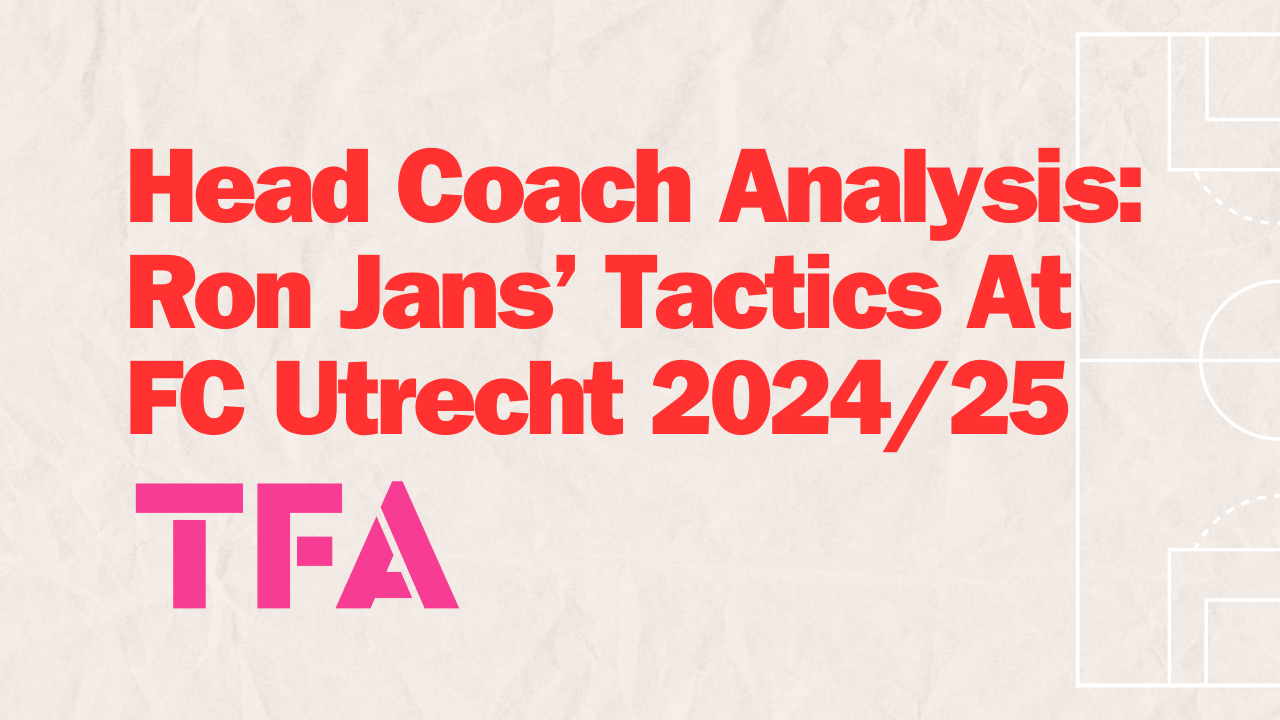




Comments